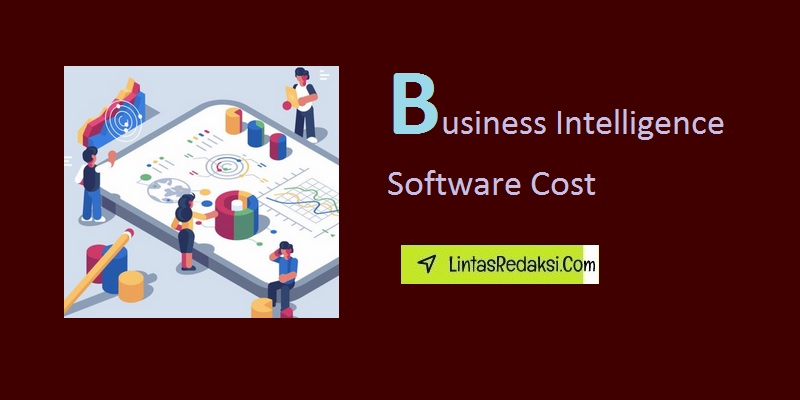Business intelligence software cost estimates can be a major consideration for businesses looking to invest in data analytics tools. Before diving into specific pricing details, it is crucial to grasp the fundamental factors that influence the costs associated with business intelligence software.
Daftar Isi
Understanding the Basics of BI Software Pricing
When delving into the realm of Business Intelligence (BI) software, one of the first considerations is understanding the cost implications. BI software cost estimates can vary widely depending on a multitude of factors. These can include the size of your organization, the complexity of your data, the features you require, and the level of customization needed. It’s essential to have a clear understanding of these elements before diving into the pricing intricacies.
Factors Influencing Business Intelligence Software Costs
Here are some of factors influencing Business Intelligence Software Costs:
Size and Scale
The size of your organization plays a significant role in determining the cost of BI software. Larger organizations with multiple users and complex data requirements will generally incur higher costs compared to smaller businesses. Scalability is also a crucial factor, as the ability to accommodate growth without exorbitant price increases is essential.
Read Also: Business Intelligence and Analytics Software Market
Features and Functionality
The range of features and functionality offered by BI software can greatly impact pricing. Basic BI tools with standard reporting capabilities will be more budget-friendly, while advanced analytics, predictive modeling, and real-time data processing functionalities will come at a premium cost. It’s essential to evaluate your specific needs to determine which features are essential and which are nice-to-have.
The complexity and depth of features offered by a business intelligence software solution can significantly impact its cost. More advanced features such as predictive analytics or real-time reporting may come at a higher price.
Deployment Mode
Whether a business opts for on-premises or cloud-based deployment can have cost implications. Cloud-based solutions often involve subscription fees, while on-premises deployments may require upfront investments in infrastructure.
The choice between on-premise and cloud-based BI solutions also influences cost estimates. On-premise solutions typically require a significant upfront investment in hardware and maintenance costs, while cloud-based options offer more flexibility with subscription-based pricing models. Understanding your organization’s IT infrastructure and preferences is crucial in determining the most cost-effective deployment mode.
See Also: Business Intelligence Software vs Data Visualization
User Licenses and Scalability
The number of user licenses required and the ability to scale the software to accommodate growing business needs can affect the overall cost of implementing a business intelligence solution.
Customization and Integration
The level of customization needed to tailor the software to specific business requirements, as well as the complexity of integrating the software with existing systems, can impact costs.
Vendor and Support Services
The reputation and expertise of the software vendor, along with the quality of support services offered, can influence the pricing of business intelligence software.
Navigating Business Intelligence Software Pricing Models
When it comes to pricing models for business intelligence software, businesses may encounter various structures such as:
- Perpetual Licensing: One-time upfront payment for a perpetual license.
- Subscription-Based: Recurring fees based on usage or number of users.
- Tiered Pricing: Different pricing tiers based on features or functionality.
- Pay-Per-Use: Costs linked to actual usage metrics.
- Freemium Models: Basic features offered for free, with premium features at an additional cost.
Read Also: Best Business Intelligence Software for Healthcare
Tips for Estimating Business Intelligence Software Costs
To arrive at accurate cost estimates for business intelligence software, consider the following tips:
- Define Requirements: Clearly outline the features and functionalities essential for your business needs.
- Request Quotes: Obtain detailed quotes from multiple vendors to compare pricing and offerings.
- Factor in Implementation Costs: Consider expenses related to software setup, training, and support.
- Negotiate Terms: Don’t hesitate to negotiate pricing and terms with software vendors to ensure a cost-effective solution.
Hidden Costs to Consider
Here are some of hidden costs to consider:
Implementation and Training
Beyond the initial software licensing costs, organizations must consider expenses related to implementation and training. The complexity of the BI software and the level of customization required can significantly impact these costs. Investing in comprehensive training programs can ensure the successful adoption of BI tools within your organization.
Maintenance and Support
Ongoing maintenance and support are often overlooked when estimating BI software costs. Regular updates, troubleshooting, and technical support services can add up over time. It’s essential to factor in these recurring expenses to avoid budgetary surprises down the line.
Negotiating the Best Deal
Here are some of negotiating the best deal:
Vendor Comparison
Before committing to a BI software provider, it’s crucial to compare offerings from multiple vendors. Requesting detailed quotes and understanding the pricing structures of each vendor can help you negotiate the best deal. Don’t hesitate to leverage competing offers to drive down costs and secure favorable terms.
Customization and Bundling
Many BI software providers offer customization options and bundled packages that can be tailored to your specific requirements. By discussing your needs openly with vendors, you may uncover opportunities for cost savings through personalized pricing models. Avoid paying for unnecessary features by opting for a customized package that aligns with your organization’s goals.
Conclusion
Understanding the various factors influencing business intelligence software costs and navigating pricing models can empower businesses to make informed decisions when investing in data analytics tools. By following these guidelines and diligently assessing requirements, businesses can effectively estimate the costs associated with implementing business intelligence software.
Navigating the world of BI software cost estimates can be a daunting task, but with careful consideration of the factors mentioned above, organizations can make informed decisions that align with their budgetary constraints and strategic objectives. By understanding the various cost influencers, anticipating hidden expenses, and employing savvy negotiation tactics, businesses can optimize their BI investments for long-term success.



